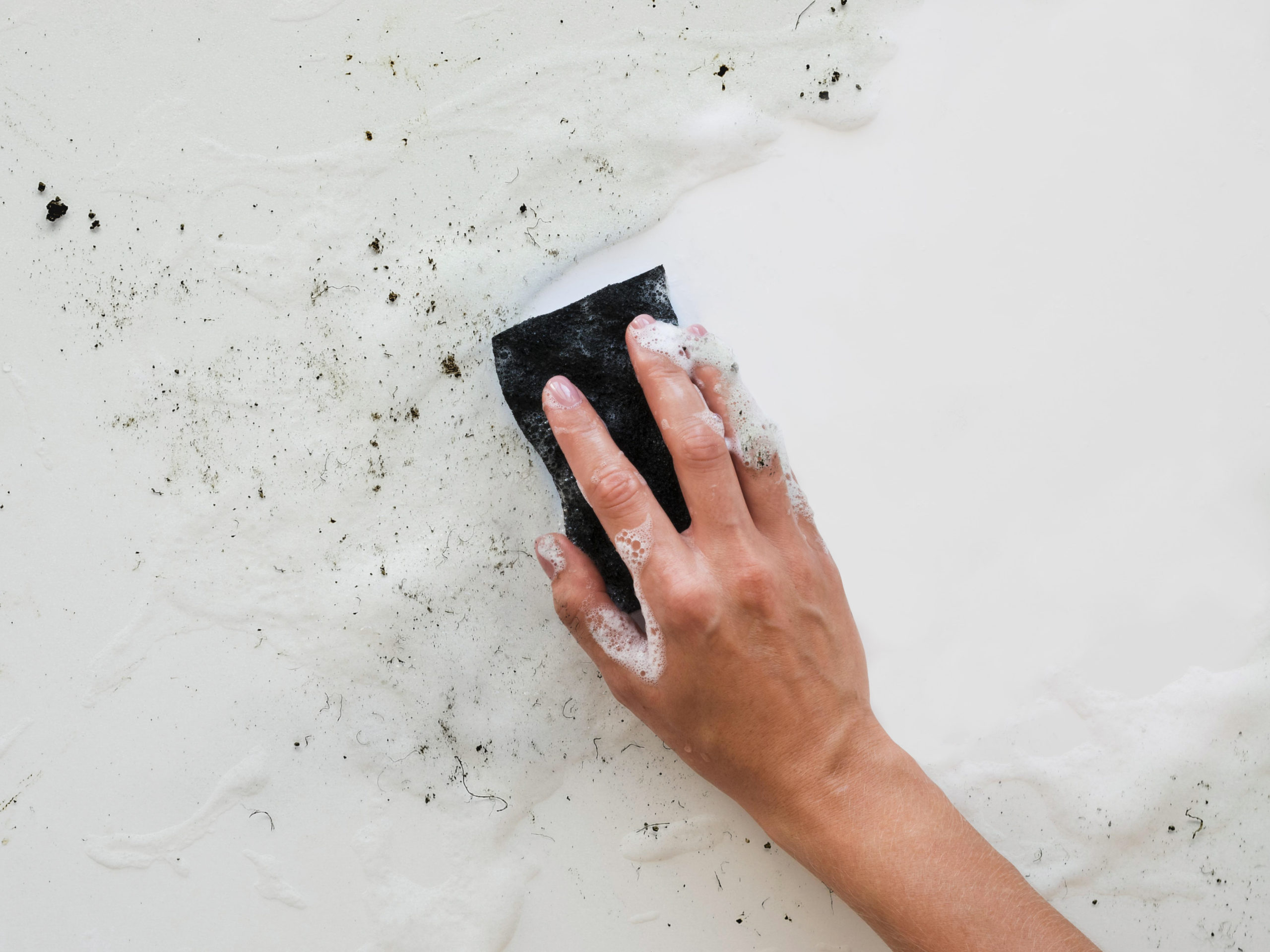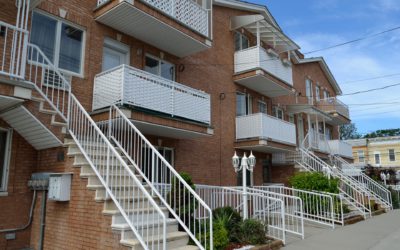Mold is a pervasive issue that affects many households, particularly in damp environments. It can not only damage the appearance of a home but also pose a significant risk to health.
Mold releases spores into the air that can cause respiratory problems, allergies, and infections. Over time, prolonged exposure to mold can lead to chronic respiratory issues, such as asthma or bronchitis. In addition, mold can produce an unpleasant, musty smell, and damage or stain surfaces in the home. In severe cases, mold can even weaken the structure of a building.
Therefore, it’s crucial to address mold as soon as you spot it in your home. The good news is there are ways to get rid of mold yourself, like using vinegar or bleach (just be careful!).
However, removing mold can be a daunting task, especially if you’re unsure of the proper steps to take. This article provides practical tips and guidelines on how to get rid of mold in your house safely and effectively. We’ll cover how to identify mold, the steps for safe removal, and strategies to prevent future mold growth. Whether you’re dealing with a minor or major mold issue, these tips can help you eliminate mold from your home and maintain a healthy living space for you and your family.
Causes of Mold Growth
- Mold needs moisture to grow, so fix any leaks or water damage pronto
Mold loves moisture, and even a little bit of water can create the perfect breeding ground for mold to grow. Once mold takes hold, it can quickly spread and release spores into the air, which can cause all sorts of respiratory issues and other health problems. And let’s not forget that mold is just plain gross and can damage your home and possessions. By tackling any leaks or water damage quickly, you can prevent mold from taking over your home and keep your living environment safe and healthy. Not to mention, fixing water damage early on can save you big bucks down the road.
- Mold feeds on organic materials like wood, paper, and fabrics, making them susceptible to mold growth in moist environments
These materials provide the perfect nutrients for mold to grow, including carbon, which is essential for its growth. When exposed to moisture, these materials can create the ideal environment for mold growth, which can quickly spread to other areas of your home. To prevent mold growth on organic materials, it’s crucial to keep them dry and avoid storing them in damp areas. Proper ventilation and regular cleaning can also help reduce moisture accumulation and prevent mold growth on these materials.
- Poor ventilation can lead to increased humidity levels and the accumulation of moisture in the air
Poor ventilation allows moisture to accumulate and creates an ideal environment for mold to thrive. This is especially common in areas with high humidity, such as bathrooms and kitchens. When there isn’t adequate airflow, everyday activities like cooking, showering, and laundry can contribute to mold growth. Moreover, poor ventilation can lead to poor indoor air quality, resulting in respiratory issues and allergies. To prevent mold growth due to poor ventilation, it’s essential to ensure sufficient airflow in all areas of your home. Regular cleaning and maintenance of ventilation systems can also help prevent mold growth and improve indoor air quality.
- Lack of sunlight can contribute to the growth of mold
Mold thrives in dark and damp environments, and sunlight can help reduce moisture levels and prevent mold growth. This is particularly true in areas with poor ventilation, where insufficient airflow can exacerbate the issue. Lack of sunlight can also cause the temperature in a room to remain low, which can increase the likelihood of mold growth. To prevent mold growth due to lack of sunlight, it’s crucial to ensure that all rooms receive adequate natural light. This can be achieved by opening curtains or blinds during the day, trimming back trees or shrubs that block sunlight, or installing additional light fixtures.
- Warm temperatures: Mold tends to grow in warm temperatures
Warm temperatures are one of the leading causes of mold growth, particularly in areas with high humidity. When combined with moisture, warm temperatures create a favorable environment for mold growth, leading to its rapid spread. To prevent mold growth in warm temperatures, it’s crucial to maintain a cool and dry indoor environment, especially in areas prone to moisture buildup.
- Keeping things dry and well-ventilated is key to preventing mold growth
Preventing mold growth in your home requires more than just fixing leaks and water damage. To prevent mold growth in your home, you need to keep things dry and well-ventilated. Promoting good airflow and circulation is key to reducing the risk of mold taking hold. You can do this by using exhaust fans in areas with high moisture levels like the bathroom and kitchen, and opening windows and doors to let fresh air in. Avoid letting wet clothes or towels pile up and use a dehumidifier to maintain optimal humidity levels. In areas that are prone to dampness like basements or crawl spaces, make sure to keep things dry and well-ventilated. Good ventilation not only prevents mold growth but also helps to improve indoor air quality by reducing allergens and unpleasant odors.
How to Get Rid of Mold in the House: Effective Removal Methods
- Scrubbing with a bleach solution
This method can be effective in removing mold on non-porous surfaces, such as tile or glass. To create the solution, mix one cup of bleach with a gallon of water and scrub the affected area with a stiff-bristled brush. The bleach kills the mold spores, making it easier to remove them. This method is ideal for non-porous surfaces such as tile and glass, but may not be as effective for porous materials like wood or fabric. When using bleach, it’s essential to take safety precautions such as wearing gloves and a mask to prevent exposure to bleach and mold spores.
- DIY options include vinegar and baking soda (but use caution!)
In addition to bleach, vinegar and baking soda are also effective methods for removing mold.
Vinegar has natural antimicrobial properties that make it a potent mold killer. To use vinegar, simply spray undiluted white vinegar onto the affected area and let it sit for a few hours before wiping it off with a damp cloth.
Baking soda, on the other hand, absorbs moisture and eliminates musty odors caused by mold. To use baking soda, mix half a cup of baking soda with a few teaspoons of water to create a paste, apply it to the affected area, and let it sit for a few hours before scrubbing with a stiff-bristled brush and wiping it clean.
Both vinegar and baking soda are safe, non-toxic, and environmentally friendly options for mold removal.
- Dry ice blasting
Dry ice blasting is an innovative and environmentally friendly method for removing mold that involves blasting dry ice pellets onto the affected surface. The pellets freeze the mold, causing it to become brittle and break apart, making it easy to remove without damaging the surface. This process is gentle on surfaces and does not leave any residue, making it safe for use in sensitive areas like schools and hospitals. Dry ice blasting is also effective on porous surfaces that may not respond well to other cleaning methods. However, this method can be more expensive than other options and requires specialized equipment and training to perform correctly.
- Air filtration
This method is effective because mold spores can quickly become airborne, making it challenging to completely remove mold from the environment. Air filtration systems use HEPA filters that are designed to capture even the tiniest mold spores and other airborne contaminants. It’s crucial to replace the filters regularly to maintain their effectiveness. Air filtration can be used in conjunction with other mold remediation methods, such as scrubbing and vacuuming, to ensure that mold spores are removed from both surfaces and the air.
Cleaning Up After Mold Removal
- Toss any moldy stuff in the trash (don’t try to salvage it!)
When cleaning up after removing mold from your home, it’s important to toss any moldy items in the trash instead of trying to salvage them. Mold can grow deep within porous materials like carpets, furniture, and drywall, making it difficult to remove entirely. Even if you think you’ve thoroughly cleaned the surface, there may still be mold spores lurking inside. Discarding any moldy items, including contaminated clothing or bedding, is the best way to prevent the spread of mold and avoid potential health risks. Moldy materials can also emit an unpleasant odor that can linger in your home, so getting rid of them is a good way to improve indoor air quality.
- Clean all affected surfaces with a bleach solution or other disinfectant
Cleaning all affected surfaces with a disinfectant solution is an essential step in mold removal. Even after visible mold is gone, tiny spores can still be present and pose a health hazard. Bleach is a potent disinfectant that can effectively kill mold spores and prevent future growth. However, it’s important to use protective gear and keep the area well-ventilated when using bleach. Alternatively, you can use a commercial disinfectant designed for mold removal.
- Use dehumidifiers or fans to keep the area dry and prevent mold from coming back
Dehumidifiers and fans are effective tools for achieving this by removing excess moisture from the air. Since mold thrives in moist environments, it’s essential to keep the relative humidity level in your home below 60%. Also, fix any leaks or water damage promptly to prevent mold growth. Regularly check for signs of moisture or water damage in areas like bathrooms, kitchens, and basements. It’s essential to clean and dry any surfaces or items that come into contact with water immediately.
To sum up, mold growth can pose a serious threat to the structural integrity of your home and the health of its occupants. Preventative measures like regular maintenance, proper ventilation, and timely repairs of any water damage or leaks are essential to keep mold at bay. If mold does appear, it’s crucial to act quickly and safely to remove it.
However, the most suitable approach depends on the extent of the mold problem and the type of surface affected. It’s always advisable to consult with a mold remediation specialist, especially for significant mold issues. By dealing with mold growth effectively and promptly, you can ensure a healthy and safe home environment for you and your family.






0 Comments